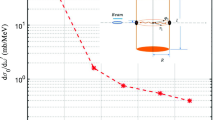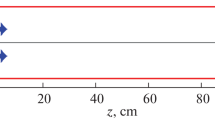Abstract
This article offers a review of the history of radar research and its application in the 20th century. After describing the wartime work of Sin-Itiro Tomonaga and his theory of the cavity magnetron, we formulate the equations of motion of an electron in a cavity magnetron using action-angle variables. This means following the electron’s path on its way from a cylindrical cathode moving toward a co-axial cylindrical anode in presence of a uniform magnetic field parallel to the common axis. After analyzing the situation without coupling to an external oscillatory electric field, we employ methods of canonical perturbation theory to find the resonance condition between the frequencies of the free theory ω r , ω ϕ and the applied perturbing oscillatory frequency ω. A long-time averaging process will then eliminate the periodic terms in the equation for the now time-dependent action-angle variables. The terms that are no longer periodic will cause secular changes so that the canonical action-angle variables (J, δ) change in a way that the path of the electron will deform gradually so that it can reach the anode. How the ensemble of the initially randomly distributed electrons forms spokes and how their energy is conveyed to the cavity-field oscillation is the main focus of this article. Some remarks concerning the importance of results in QED and the invention of radar theory and application conclude the article.
Similar content being viewed by others
References
W. Dittrich, M. Reuter, Classical and Quantum Dynamics, 4th edn. (Springer International Publishing, 2016)
S. Tomonaga, Theory of Split-Anode Magnetron (I), J. Phys. Soc. Jpn 3, 56–61 (1948)
K. Shimoda, Theory of Split-Anode Magnetrons by Sin-Itiro Tomanaga, no publisher or year given (cf. internet)
A.W. Hull, The Effect of A Uniform Magnetic Field on the Motion of Electrons Between Coaxial Cylinders, Phys. Rev. 18, 31 (1921)
H.W. Welch Jr., W.G. Dow, Analysis of Synchronous Conditions in the Cylindrical Magnetron Space Charge, J. Appl. Phys. 22, 433–438 (1951)
Author information
Authors and Affiliations
Corresponding author
Rights and permissions
About this article
Cite this article
Dittrich, W. On Tomonaga’s theory of split-anode magnetrons. EPJ H 41, 165–180 (2016). https://doi.org/10.1140/epjh/e2016-70005-7
Received:
Revised:
Published:
Issue Date:
DOI: https://doi.org/10.1140/epjh/e2016-70005-7




